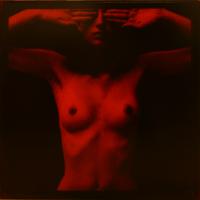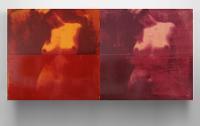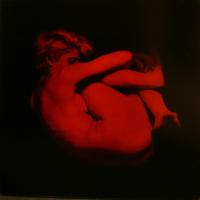Interview to Massimo Attardi
Massimo Attardi is an artist that absolutely uses bichromate gum in a personal and iconoclastical way. The often conformed panorama of alternative and antique print techniques reborn with his work. A classical technique such as the gum one, exploited for decades, has been reinvented and put in service of real expressive exigencies, giving life to Massimo Attardi’s personal and identifying visual world.
It has for sure been a pleasure when Massimo Attardi accepted to be interviewed and let me publish some of his recent photographs on Camera Obscura.
Fabiano Busdraghi: Since the advent of digital photography, analogical photography seems to live a new life and so are alternative and antique techniques. More than characteristics and result, some critical analysis attribute this to the recover of the expressive media low speed, such as for pinhole photography, that counter-balance the frenetic commercial photography, based on milliseconds.
Massimo Attardi: I’m not with this way of thinking, slow speed doesn’t absolutely mean quality.
The expressive media (bichromate gum print for this case) is slow itself, it’s its characteristic and it is not modifiable. If it would be, casually, a rapid technique, with the results we obtain now, would it be less worthy?
Pinhole photography is nothing more than curiosity nowadays. Paolo Gioli is the only who brought pinhole photography to an artistic state… The rest is nothing! Moreover I think that the commercial picture (maybe the camera?) that gain the eighth millisecond fantastically enlarge the creativity.
When we want slow speed… well, there’s always B pose and sometime also T pose. Metal thimble over the lens, microscopic hole… and go!
Fabiano Busdraghi: I’m with you when you talk about slow speed, even if I do appreciate some works of Stephen Eckel, Martha Casanave, Abelardo Morrell (just to cite some artists that work with the hole). I think that technical evolution of photography is at our creativity service, and I’m happy to dispose of all modernity instruments. Actually sometime the characteristic I less enjoy of the alternative technique I practice is their real slow speed!
But let’s go back to the reasons behind your choice to use antique techniques. Some authors underline the uniqueness and unrepeatability of the work. Some other point the accent on the original and personal component in opposition to homologation derived by the use of serial instruments, such as industrial papers. I do not even think this is the problem. I think it is a reworking of the contact with reality, the direct interaction with materials, the sensations on skin, the pleasure of using your own hands to build an image. Which is your principle motivation for using bichromate gum as a printing technique?
To read the rest of this article go to page: 1 2 3 4 5







Camera Obscura » La prima candelina
said, June 7, 2008 @ 12:32 PM :
[...] Intervista a Massimo Attardi 1,623 visite [...]
Camera Obscura » Le nuove gomme bicromate su legno di Massimo Attardi
said, June 9, 2008 @ 10:20 AM :
[...] abbiamo detto nell’ultimo post, l’intervista a Massimo Attardi è in assoluto l’articolo più cliccato di Camera Obscura. I lettori saranno quindi felici di [...]
davide
said, October 9, 2008 @ 8:01 PM :
Sono stupito dai tuoi quadri sono molto belli e come tu li realizzi.